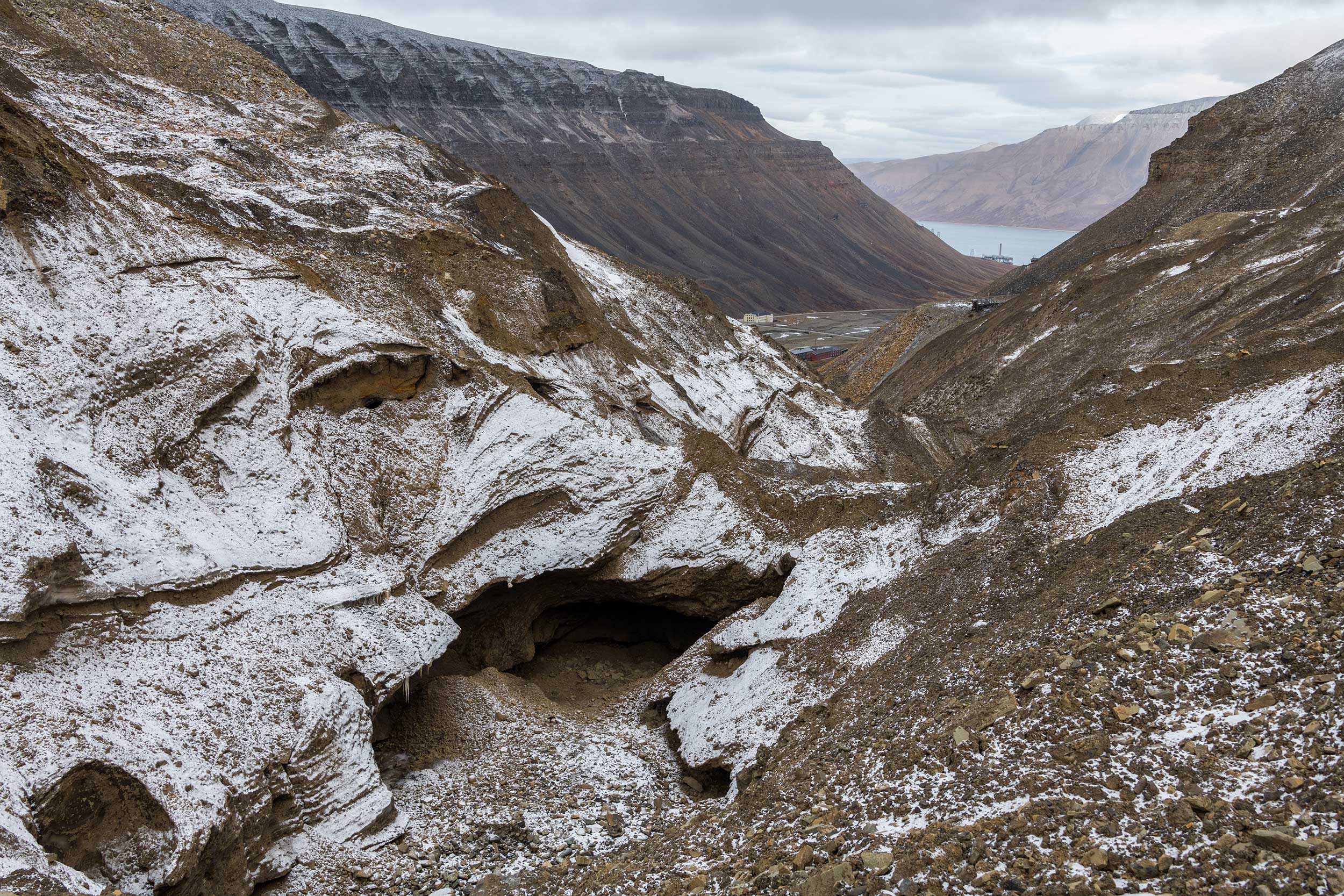Hey team, and welcome back to one5c. Part of being in a climate-active community is taking a minute to appreciate the real wins. Pausing a “carbon mega bomb” fossil fuel project on the Gulf Coast the way the Biden administration did last week deserves its moment of celebration. It’s important to go a little emoji happy (🎉🥳🎊🕺) because victories prove to us that being informed and engaged matters. It’s also important because so many green promises get broken so often it’s hard not to let it drag you down.
That’s why we spend a lot of time helping y’all spot the things we have the power to change and separating performative green-ness from the real deal. And this past week gave us plenty of both to chew on. —Corinne
WHAT WE’RE INTO THIS WEEK
By Sara Kiley Watson

A liquid natural gas tanker makes its way into port. Vytautas Kielaitis/Shutterstock
Reading list
Understand Biden’s LNG decision in 15 minutes
On Friday morning, the Biden administration paused the approval process for all pending liquefied natural gas (LNG) export terminals until their climate impacts can be further studied. This is a major win for the climate and climate activism, but there’s a lot to wrap our collective minds around here—from electoral impacts to emissions math—so we curated three things you can read in 15 minutes or less to make sense of it all:
- Visualize the emissions. This chart over at Canary Media shows why, despite its rep as a “bridge fuel,” LNG is way dirtier than its counterparts over its life cycle.
- Get the global picture. No matter what the fossil fuel lobby might say, LNG exports aren’t displacing coal overseas. As the NRDC explains, the gas is winding up in European nations where it’s hurting investment in renewables and other clean-energy projects.
- Check the election math. Young voters, who were crucial in the 2020 election, haven’t been too happy with Biden’s fossil fuel track record. Inside Climate News digs into whether this new policy will bring them back to him this November.
Cause for optimism
The whales get a windy win
Anti-wind activists have a tendency to cling to the idea that offshore turbines harm whales. Though there’s no strong research to support that objection, that doesn’t mean we shouldn’t play it safe when it comes to disrupting ecosystems. Last week, NOAA Fisheries and the Bureau of Ocean Energy Management released a joint strategy to protect and encourage recovery of endangered North Atlantic right whales while boosting offshore wind. The plan looks to assess areas to keep off-limits to leasing in order to avoid disturbing the massive marine mammals. It also calls for verifying that noisy implementation processes don’t go above a certain threshold. Whales, after all, are crucial to biodiversity and act as incredible carbon sinks after death.
Greenwatch
Cookstove carbon credits are anything but clean
Carbon credits have been in the hot seat for a while, but one particular type of the feel-good climate solution is under fire: cookstove offsets, which fund the switch to clean cooking methods in lower-income countries. About one-third of the global population cooks using open fires or kerosene, biomass, or coal stoves—to deadly effect: The air pollution from those methods caused 3.2 million deaths in 2020. Projects that make it easier to adopt safer methods have merit based on this fact alone, but casting them as offsets is kind of baloney, according to a new study published in the journal Nature Sustainability. It shows that typical cookstove offsets overstate their climate benefits by 1,000%. The efforts are still worth funding (the Clean Cooking Alliance has multiple projects on deck and ways to donate), but don’t count on them canceling out the emissions from your last flight.
Consumer this
Emma Stone’s ‘Green Queen’
The Curse, which wrapped its first season earlier this month on Showtime, is a lesson in how not to be green and influence people. The series centers on self-styled “Green Queen” Whitney Siegel (Emma Stone) who is the brains behind an HGTV-style show about perfectly passive houses—i.e., homes that are uber-energy-efficient but often cost a bit more than a traditional new build. In bringing her business to a small New Mexico town, she exposes some of the worst habits of “green” businesses and influencers, Grist’s Eve Andrews says in a recent story. These cringeworthy ticks include elitism, greenwashing, and thinly veiled gentrification. We won’t give away the ending, but suffice it to say this queen is not exactly popular.
Mic-drop climate stat

The portion of Brits who don’t know what “single-use plastics” are, according to a recent survey. The vocab around plastics can be confusing, and this is a no-judgment zone, so don’t forget to check out our extensive primer on plastic pollution.
Study guide
The ‘zombie virus’ discussion rises from the grave—again
By Glorie Martinez

What’s hiding inside this thick layer of Arctic permafrost? magnetix/Shutterstock
Human-caused climate change, if unabated, could unleash a multitude of horrors on the planet and its inhabitants. But one particularly apocalyptic-sounding case is that of the Methuselah microbes, or “zombie viruses”—long-lost diseases captured in Arctic permafrost.
Scientists have studied these microorganisms for decades, but a 2022 Nature Communications study has recently been making the online rounds and pulled them back into the spotlight. These microbes, like Pithovirus sibericum and Mollivirus sibericum, have survived eons buried as deep as 100 feet below the surface in permafrost, the perennially frozen mixture of soil, sediment, and ice that blankets Earth’s tundra.
With its deep layers and cold temperatures, permafrost is perfect for preserving biological material; according to NASA, 1 gram of the stuff can contain thousands of microbes. As the planet warms, permafrost thaws—and the risk of releasing ancient viruses increases. But these prehistoric cooties might be distracting us from present-day threats.
Should we be freaking out?
No ancient viruses capable of infecting humans have yet been found alive in the Arctic permafrost. P. sibericum was able to infect single-cell organisms, one 2014 study reported. But the authors also found traces of many other viruses in the ice, including known human pathogens such as poxviruses and herpesviruses. “If the amoeba viruses are still alive, there is no reason why the other viruses will not be still alive, and capable of infecting their own hosts,” Aix-Marseille University genomics professor and zombie virus researcher Jean-Michel Claverie told CNN last March.
Industrial development might further increase the chances of these ancient baddies breaking free. Less sea ice allows for increased mining operations in the Arctic, leading to deep drilling into the most pathogen-heavy parts of frozen soil. It’s impossible to predict how any freed microbes might react in the modern world.
What about other diseases?
Spending time sweating popsicle pathogens distracts from other potentially deadly diseases. A heating planet is a petri dish for all kinds of infections, and they definitely aren’t all zombies. The rise of Lyme disease in upstate New York’s Hudson Valley, for example, is a direct result of human development blurring the lines of an ecosystem.
Luckily, the solutions for fighting the rise of these baddies align with conservation and climate policy. A 2022 study in the journal Science Advances found that reducing deforestation, managing our relationship with wildlife, and monitoring diseases that bounce between animals and humans (these are called “zoonotic,” and yes, SARS-CoV-2 aka the virus that causes COVID is one) can help avoid the next pandemic.
The price tag of these measures is an estimated $20 billion per year—less than 5% of the economic potential lost to such diseases. Not to mention, such climate-friendly endeavors also work to mitigate the global temperature rise, which helps keep spooky ancient viruses buried deep beneath the Arctic.
